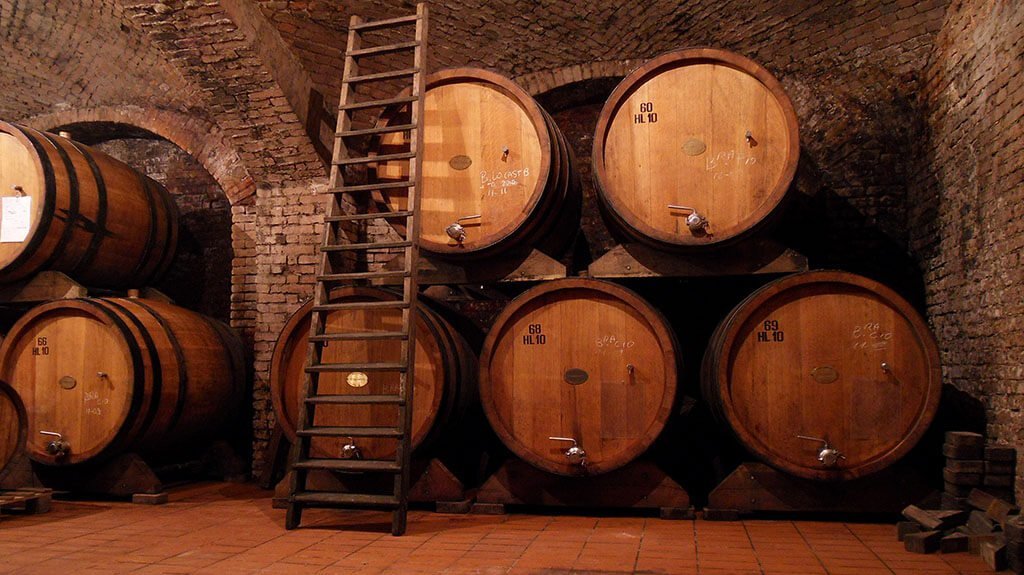Barolo vs. Barbaresco: A Rivalry of Piedmontese Titans!
Photo: Barale’s cellar.
This week let’s explore the pinnacle of Nebbiolo from its two Piemontese regions: Barolo and Barbaresco. Wines from both appellations command high prices and respect from serious wine collectors and wine lovers. But what makes Barolo different from Barbaresco?
Unlike in Bordeaux, where there is a clear varietal difference between the Left and the Right Bank (of the river Gironde), Barolo and Barbaresco are all about Nebbiolo. Perhaps the contrasting red wines of the Côtes de Nuits and the Côtes de Beaune are a better comparison: they offer subtle differences in style based on variations in topography and soils.
Origins and Terroir
Barolo and Barbaresco take their name from villages at the foot of the Piemontese mountains. The town of Barolo is home to fewer than 1,000 people, and the vineyard area around Barolo (1,982 ha) can be divided into two soil types. Calcareous marls, called Tortonian soils, dominate Barolo's west (communes), making elegant, earlier-drinking wines. The east is characterised by poor and rocky, Serravallian soils, with more limestone, resulting in powerfully tannic wines with remarkable aging potential. Most vineyards are planted at around 400 m elevation but sites in La Morra and Montforte peak just below 550 m.
The village of Barbaresco lies to the north of Barolo and makes wines from Nebbiolo that are to most tasters, nearly identical to Barolo in blind tasting. Although the first Barbaresco wines were labelled in 1894, the region gained international recognition when Angelo Gaja's wines put it on the map in the 1970s. Barbaresco has far less vineyard (677 ha) area than Barolo, making it even more scarce to find. Barbaresco region is lower and warmer, and usually, the harvest starts earlier than in Barolo. Most great vineyards lie at around 300 m elevation, and no site higher than 500 m. While the same soil types define both regions, Barbaresco soils are somewhat sandier, softer and warmer than Barolo soils. The resulting wines are generally more delicate and approachable in their youth.
Styles and Winemaking
The above discussed variation in terroir partly explains the stylistic differences between the fuller more forceful Barolo and the softer, more elegant Barbaresco wines. Winemaking, or more specifically aging requirements, lead to further contrast.
Barolo DOCG has two classifications, a “normale” Barolo, which requires 38 months of aging (including 18 months in wood) and Barolo Riserva DOCG with 62 months aging (18 months in wood).
Barbaresco DOCG also has two classifications, a “normale” Barbaresco with 26 months aging (9 months in wood) and Barbaresco Riserva DOCG with 50 months aging (9 months in wood).
With a shorter aging requirement of two years (one in oak), Barbaresco wines often showcase vibrant red fruit flavours, such as cherries and raspberries, combined with floral undertones and hints of spice. The tannins are typically more refined and polished, offering a smoother mouthfeel in their youth.
Age-Worthiness
Both Barolo and Barbaresco are celebrated for their exceptional aging potential. Due to their pronounced tannins and acidity, Barolo wines can gracefully evolve for several decades, revealing the complexities of time with each passing year. Barbaresco, while still capable of aging for extended periods, tends to mature slightly earlier, providing a delightful balance between youthful freshness and evolving tertiary characteristics. Nevertheless, a number of really old Barbaresco wines of extreme age, tasted recently and from known great vintages, like 1958, 61, 64, 71, 78 and 82 and with real producer and site pedigree, have been fabulous.
OK, but is one better than the other?
Many Italians would argue that Barolo is the undisputed King of Wines – and indeed just the sheer use of the word Barolo to sort of cover the whole area, gives it a headstart. In reality, we are not discussing better and worse here; we are talking about different. The rivalry between Barolo and Barbaresco exemplifies the profound diversity within the Nebbiolo grape. And even if Barolo didn’t exist, Barbaresco would still be up there with the greatest red wines of the world. Indeed most really experienced tasters of the wines of this region usually agree that of their top 10 wines ever, preference is split about 50-50.
Which team are you in? Check out the Barolo facts and figures here and for Barbaresco click here.
Saluti to the Piedmontese Titans!
Photo: Map of Langhe wine region including Barolo and Barbaresco.


